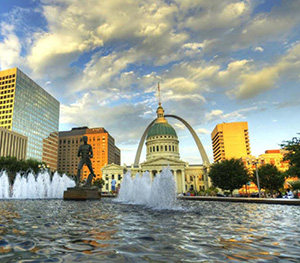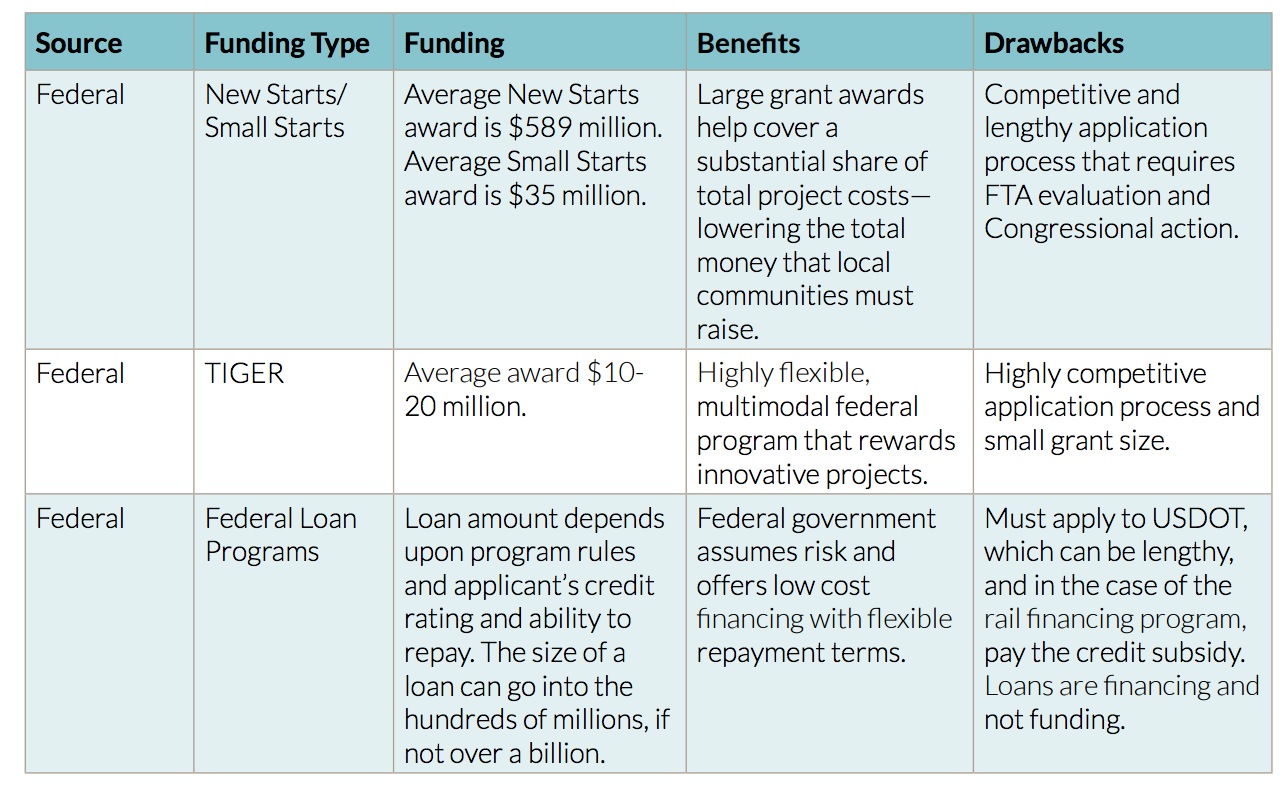TRANSPORTATION FOR AMERICA
Introduction
 Though the St. Louis region has advanced several proposals to dramatically expand or improve the region’s public transportation, the bottom line is that an overall shortage of funding presents significant challenges to transit expansion in St. Louis.
Though the St. Louis region has advanced several proposals to dramatically expand or improve the region’s public transportation, the bottom line is that an overall shortage of funding presents significant challenges to transit expansion in St. Louis.
The purpose of this report is not to identify which of these possible transit projects are the “right” or “best” ones, or even to propose exactly how they should be funded.
Rather, it is to show a range of initiatives and funding alternatives that have been successfully deployed around the country, examine them earnestly and chart a clear and expeditious course for improved public transit throughout our community.
The economic prospects of the St. Louis region are directly related to the quality of access to transportation, which makes additional major investments in public transportation essential.
There are several significant transit expansion and service innovation proposals that have already received review and enjoy substantial support in the St. Louis region. Examples include the Northside/Southside light rail project, a St. Louis County light rail corridor and several options for new bus rapid transit (BRT) service, among others. Each project has its pros and cons. Light rail expansion could connect thousands more residents to opportunities and create new options for development in the region, but it is also expensive. The BRT projects would provide new transit service at a lower price, but do not yet have the same track record of catalyzing new development or transformative change to nearby land uses.
The St. Louis region has done substantial planning to identify key transit projects that will offer more transportation options, improve access to opportunity and attract talent — and the thousands of jobs now relocating to be near that talent nationally. The region has also instituted local sources of transit funding and has utilized those sources to expand transit in advance of further state or federal funding. However, without the identification of a new source(s) of funding, the region cannot move forward with any major expansion to their transit network.
In recent decades, regions around the country that have built or expanded transit have looked primarily to the federal government for funding.
Some regions became experts in using the Federal Transit Administration’s (FTA) New Starts Program to build new transit. New Starts is set up to provide hundreds of millions of dollars for projects over multiple years. Through this program, FTA thoroughly analyzes how each project is expected to perform in terms of mobility improvement, environmental benefits, operational efficiencies, cost effectiveness, transit-oriented land use policies and economic development. Only projects that receive good ratings in these areas are funded. However, competition is stiff for New Starts funding; the program has a long and growing list of potential projects, and federal appropriators have not taken action to help the program keep pace with demand.
Some areas, like St. Louis, have self-funded transit projects to avoid the challenges and delays associated with relying on federal programs. But now the region is faced with the reality that no single regional entity has sufficient funding to “go it alone” on any of their planned major transit projects.
The truth is that one or two funding sources are rarely enough to make these projects happen. Many regions have successfully built new transit projects by creatively piecing together funding through a variety of sources from all levels of government, along with a variety of private sources. This strategy is becoming more common as governmental budgets are stretched and construction becomes more expensive.
Each project presents different options for funding sources. For example, rail projects are more likely to generate new development opportunities and increases in nearby property values, making it more effective to use techniques that capture part of that increased value to help fund the upfront costs of the project. Analyzing priority projects and the most effective funding options for each type of project can help a community decide which revenue sources they support and believe are most appropriate for the services they are seeking.
Download full version (PDF): Funding Transit in St. Louis
About Transportation for America
www.transportationforamerica.com
Transportation for America is an alliance of elected, business and civic leaders from communities across the country, united to ensure that states and the federal government step up to invest in smart, homegrown, locally-driven transportation solutions. These are the investments that hold the key to our future economic prosperity.
Tags: Citizens for Modern Transit, Missouri, MO, St. Louis, T4America, Transportation for America







 RSS Feed
RSS Feed